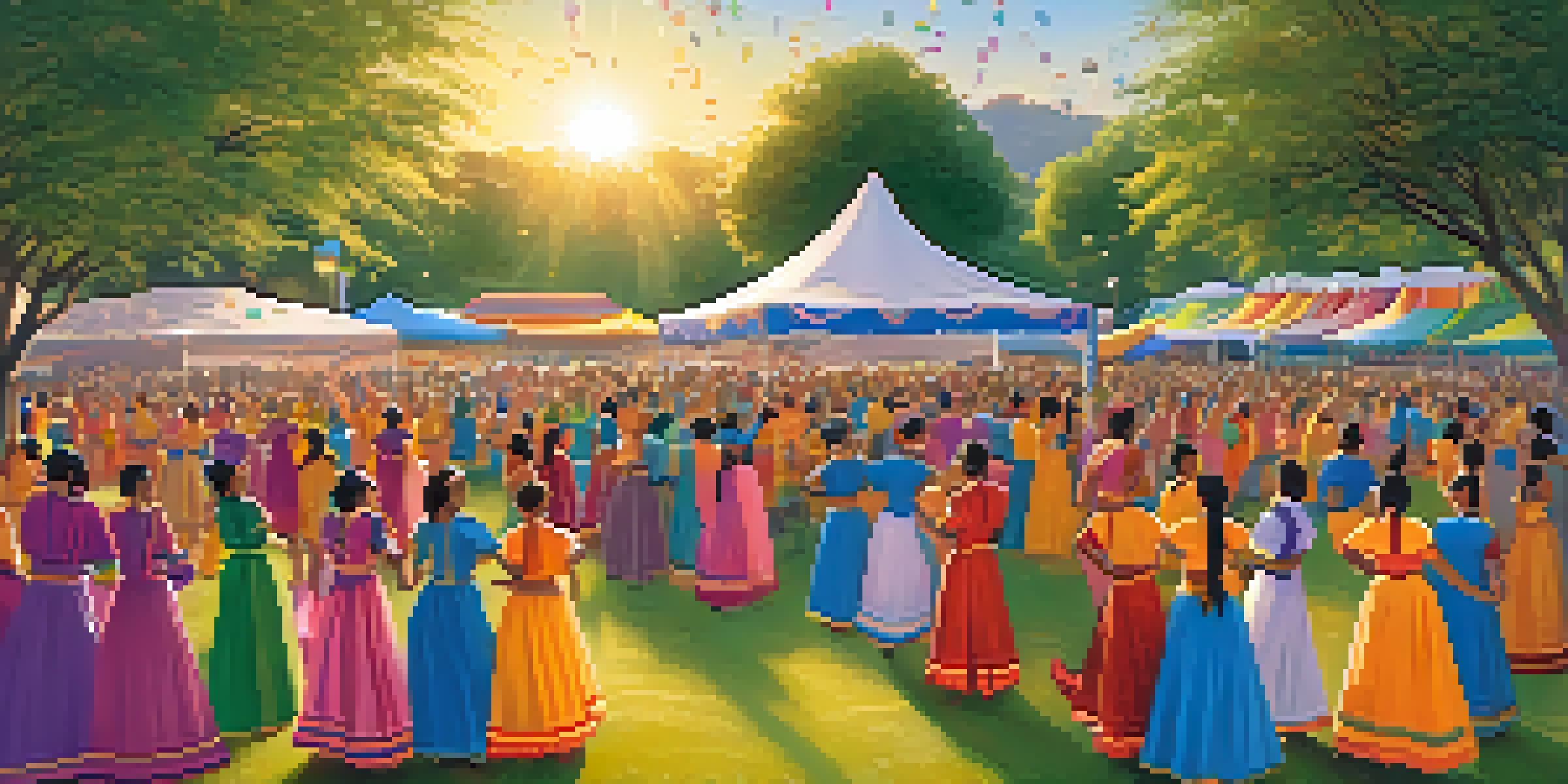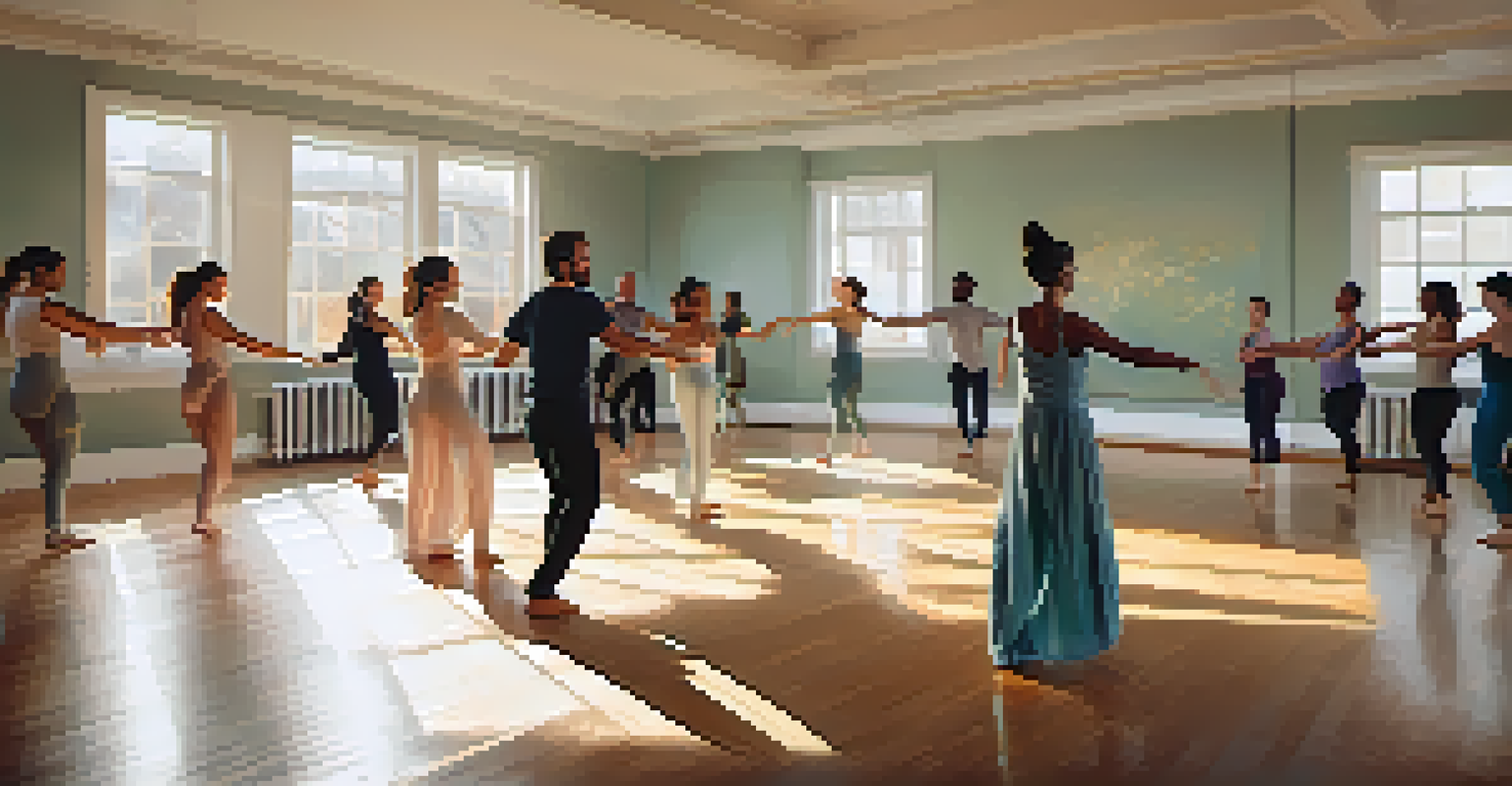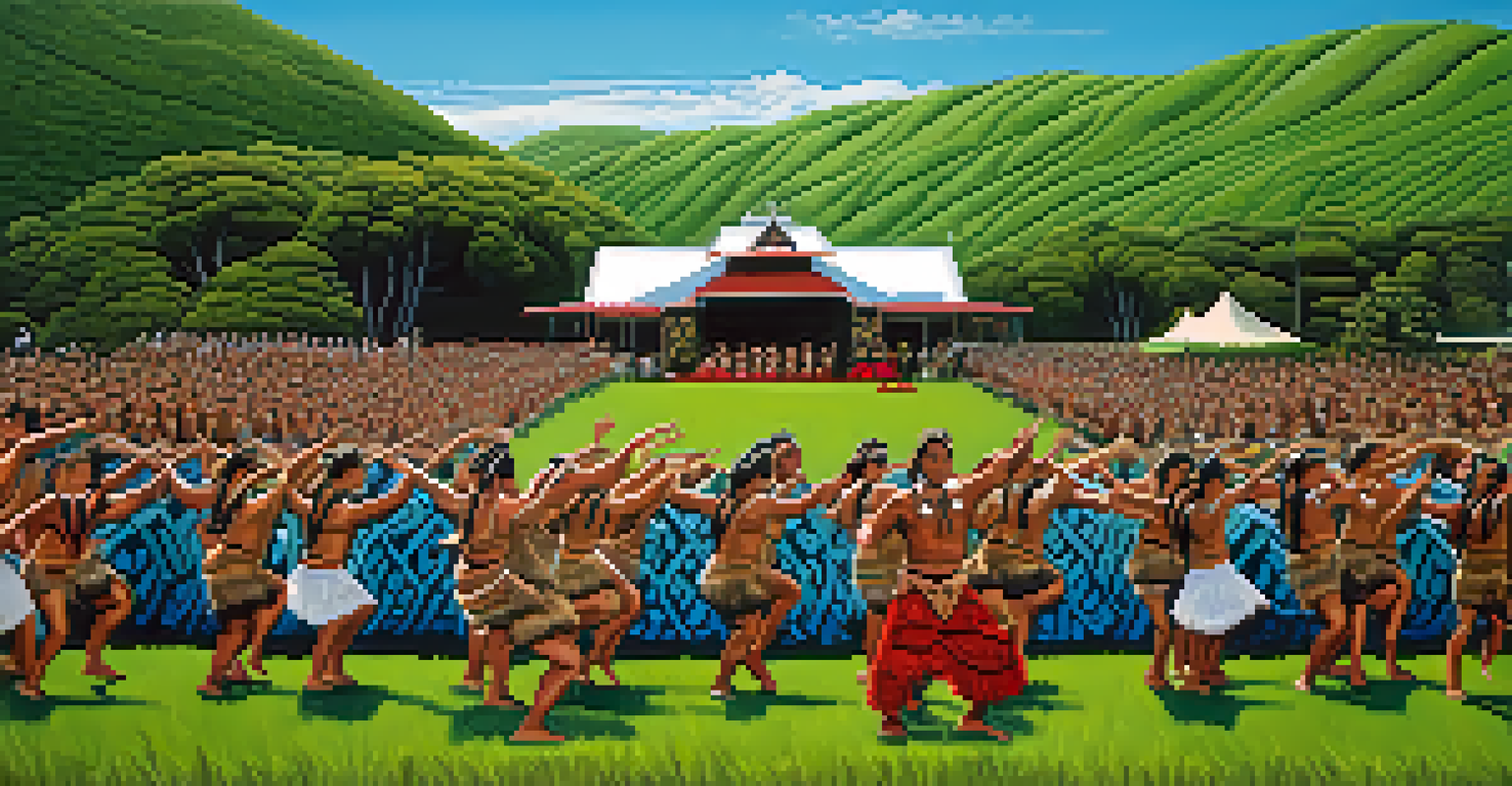Dance as a Universal Language: Bridging Cultural Divides

The Essence of Dance as Communication
Dance is often described as a universal language, transcending words and spoken barriers. Through movement, individuals can express feelings and stories that may be difficult to articulate verbally. This non-verbal communication taps into shared human experiences, making it relatable regardless of cultural background.
Dance is the hidden language of the soul.
For instance, a celebration dance at a wedding in one culture may convey joy and love, while a traditional mourning dance in another expresses grief and remembrance. Despite their differences, both use movement to communicate profound emotions. This ability to convey complex feelings through physical expression is what makes dance truly universal.
Moreover, dance allows for a unique kind of dialogue, one that is felt in the body rather than heard by the ears. When we watch a dance performance, we are not just spectators; we become part of a shared experience that invites us to feel and reflect. This connection can bridge gaps and foster understanding among diverse groups.
Cultural Richness in Dance Forms
Around the world, every culture has its own unique dance forms, each embodying its history, traditions, and values. From the vibrant Flamenco of Spain to the intricate Bharatanatyam of India, these dances offer a glimpse into the soul of a culture. Engaging with these forms can deepen our appreciation for their origins and significance.

Consider the way the Haka, a traditional Māori dance from New Zealand, is performed with powerful movements and chants that tell stories of bravery and identity. When outsiders participate or even observe, they connect with the cultural narrative in a visceral way. This cultural exchange enriches our understanding and appreciation of diversity.
Dance as Universal Communication
Dance transcends verbal barriers, allowing individuals to express complex emotions and stories through movement.
Additionally, as cultures blend and evolve, new dance forms emerge, showcasing a beautiful fusion of different traditions. This evolution is evident in styles like Hip-Hop, which originated in urban environments and has now influenced dance scenes globally. Such hybrid forms highlight the dynamic nature of culture and how dance serves as a platform for cross-cultural dialogue.
Dance as a Tool for Social Change
Throughout history, dance has been a powerful medium for social change and activism. Movements such as the civil rights movement in the United States incorporated dance as a way to unite people and express their struggles. This ability to rally communities and amplify voices showcases dance’s role in societal transformation.
Dancing is like dreaming with your feet.
For example, the 'Dancing in the Streets' initiative brought together diverse groups to celebrate unity and peace through dance. These events not only foster community spirit but also raise awareness on critical social issues. The rhythm of the music and the energy of the dance create an atmosphere conducive to change.
Moreover, contemporary choreographers are increasingly using their art to address pressing issues like climate change, inequality, and mental health. Through dance, they convey messages that resonate deeply with audiences, encouraging reflection and action. This intersection of art and activism demonstrates dance's potential to inspire and mobilize.
The Role of Dance in Cultural Festivals
Cultural festivals around the world celebrate the rich tapestry of dance, bringing people together to share in the joy of movement. These events often showcase traditional dances, allowing participants and spectators alike to immerse themselves in diverse cultural experiences. Festivals serve as a reminder of our shared humanity, celebrating differences while highlighting commonalities.
For instance, the Notting Hill Carnival in London features Caribbean dance and music, attracting millions who come to celebrate diversity and community. The vibrant colors, lively rhythms, and infectious energy create a sense of belonging that transcends cultural divides. Such gatherings foster connections between people from various backgrounds through the universal joy of dance.
Cultural Exchange Through Dance
Every culture has unique dance forms that reflect its history, and engaging with these dances fosters appreciation and understanding of diversity.
Additionally, these festivals often include workshops and classes, encouraging attendees to learn and participate in different dance forms. This hands-on approach nurtures understanding and respect for other cultures, creating lasting memories and friendships. Festivals become a celebration of life, where dance acts as the heartbeat of cultural exchange.
Dance Education and Cross-Cultural Understanding
Incorporating dance into educational curricula can significantly enhance cross-cultural understanding among students. Dance classes that introduce various styles from around the world foster appreciation for diversity and promote inclusivity. Through learning different dances, students not only gain physical skills but also insights into the cultures they represent.
For instance, a classroom that experiences African dance may learn about the history and meanings behind the movements, creating a richer context for their practice. This kind of experiential learning encourages empathy and broadens perspectives, allowing students to see the world through different cultural lenses.
Moreover, dance education can create a sense of community within schools, breaking down barriers among students from diverse backgrounds. When students collaborate on dance projects, they engage in dialogue and share experiences, building friendships that transcend cultural boundaries. The classroom thus becomes a microcosm of a more inclusive society.
Global Dance Movements and Their Impact
With the rise of social media, dance has become a global phenomenon, with trends like TikTok challenges crossing borders in an instant. These viral dance movements often blend elements from various cultures, showcasing the interconnectedness of our world today. As people engage with these dances, they inadvertently participate in a cultural exchange that fosters understanding.
For example, the popularity of K-Pop has led to a surge in interest in Korean culture, including traditional dances and music. Fans from different countries not only learn the choreography but also gain insights into the cultural significance behind the performances. This exposure can lead to a deeper appreciation for cultural diversity and the stories behind the dances.
Dance for Healing and Connection
Dance serves as a therapeutic tool, helping individuals express emotions and build community connections in times of distress.
Moreover, global dance movements encourage collaboration among dancers worldwide, creating opportunities for cross-cultural partnerships. Dancers can share techniques and styles, enriching their art while promoting cultural dialogue. This collaborative spirit exemplifies how dance can unite individuals across the globe, bridging cultural divides and fostering mutual respect.
Dance as a Means of Healing and Connection
In times of distress, dance has often been a source of comfort and healing. Many cultures use dance as a therapeutic tool, allowing individuals to express emotions and cope with trauma. The act of moving rhythmically can release pent-up feelings and create a sense of community, helping people heal together.
For example, dance therapy programs have been developed to support those dealing with mental health issues, encouraging participants to communicate feelings through movement. This practice not only aids in emotional expression but also builds connections among participants, fostering a sense of belonging and support. The shared experience of dance can create bonds that might otherwise remain unformed.

Furthermore, community dance initiatives often emerge in response to societal challenges, bringing people together to cope with shared experiences. These gatherings, whether for celebration or commemoration, remind us of our shared humanity and the healing power of connection through dance. In this way, dance serves as a powerful reminder that we are never alone in our struggles.